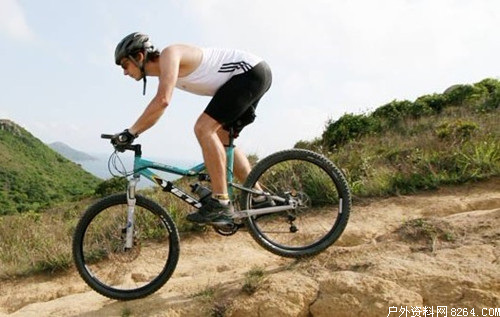Mountain bikes can climb 30 degrees uphill and ride down 45 degrees or even steeper downhill, limited only by the tire's grip. However, there are many times when a rider is in a wrong position because of riding a bicycle or because he lacks certain riding skills, he fails to climb uphill and becomes a “cart party”. Even some riders have suffered serious injuries when they are downhill. Therefore, if you love cycling, you must master certain riding skills. Let's take a look at the mountian biking skills.
Long uphill
Adjusting your riding posture can make it easier to climb long slopes.
As the slope becomes steeper, bend your arm and sit closer to the front of the seat cushion. This position will make it easier to pedal and use pressure on the wheelset to keep balance.
Try to keep your upper body as weak as possible and avoid pulling the handle during the output. Your best position when climbing a hill should be to make your arm effortless and even use your fingertips to steer.

Correct sitting stamping
Uphill skills: Starting from a steep uphill, we should often find it difficult to get in the middle of a steep slope. You should learn how to start riding in such situations.
The gear should be set light (front small disk - rear large flywheel, 3x9/8/7)
You can stand in front of the seat cushion or sit on it, but the body must be upright.

With a steep descent and a steep descent, the closer your center of gravity is to the tires, the less grip on the tires. So on a steep uphill your chest will be close to the handle, and on a steep down the belly will be close to the seat cushion.
If the posture is wrong, [left] stands too steeply at the time of steepness, it will make the center of gravity too frontal, and there will be no room to absorb the impact. [Right] When the body is too far uphill, the front wheel is tilted.
Steep downhill start
It is not easy to start on a steep and narrow forest road that is narrow and steep. Start with an open, gentle downhill path. The goal is to speed up the pace from "get on the train to maintain a stable downhill posture" and maintain a straighter downhill course. Here are some tips:
Pull the front and rear brakes
Foot pedal first
After quickly sitting on the seat cushion, let out the brakes and immediately find the balance between your feet. Don't look down when you step on your foot, look at the path you are going to!
The line of sight looks straight forward, and immediately adopts a crouching posture. The bike pedal remains in a horizontal position. The buttocks move backwards and lowers the upper body. The center of gravity rests on the balance of the pedal position.
Downhill ride
In the long downhill section, the tight body will make your hands and feet so fast and easy to ride faster.
The buttocks leave the seat cushion and move back, bending your arm at the same time, letting your inner thigh slightly touch the seat cushion, balancing your focus on the pedal.
If the slope is gentle, your body does not need to be too far from the cushion, and about 1 inch is enough. Stay alert and expect the body to absorb shocks you didn't see. The more rugged the terrain, the more backward your center of gravity and the lower your upper body.
The line of sight distance should be equal to or greater than the distance you can stop, keep watching the changes in the road conditions, and pay attention to the route you can take.

When downhill, the body maintains a balanced posture with almost no weight falling on the driver, and there is almost no steep downhill slope with major obstacles.






